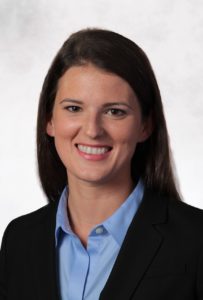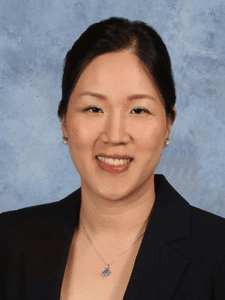Safe Spaces | Linda Hong, MD and Jennifer Gordon, MD

Jennifer Gordon, MD

Linda Hong, MD
Generally, diverse groups are more successful, outperform, and make better decisions than homogenous ones. However, to make an impact with diversity, we need retention of diverse candidates and not just recruitment. For that, we need an environment in which diverse people can find mentorship, be promoted, and thrive. To highlight this, Dr. Camara Phyllis Jones from the Harvard School of Public Health employs a powerful allegory she calls the Gardner’s Tale. [1]. She writes of her house in Baltimore, in which two large flower boxes stood on her front porch. One was filled with old soil that was poor and rocky, and the other with new potting soil that was rich and fertile. Even the strongest of the flowers in the old soil could not reach their potential – for that we must fundamentally change the conditions in which they grow.
This is not to say any of us are deliberately discriminatory, bias is insidious. People who we perceive as similar to us, often because of ethnicity or gender presentation, are comfortable because they are familiar. Their perspective and communication style resonates with our own experience, and we more easily see the merit of their ideas. Interactions that are unfamiliar or challenge our biases are less comfortable. Humility and empathetic listening are less valued than extroversion and decisiveness when assessing “leadership potential” despite being highly effective. Collaborative communication, more common in women, is often perceived as weak yet assertive language as aggressive. What makes diverse teams powerful and innovative is precisely what makes them uncomfortable. They offer new experiences and challenge our preconceptions. They push us to interrogate our assumptions, clearly articulate our thought process, and respond to critique.
So how do we create an environment that nurtures and promotes diversity? Our concept of diversity must be broad and intersectional. Its scope cannot be limited to highly visible identities like gender presentation and skin color, we must include less visible ones such as family status, cultural background, and sexual orientation. Nor do these identities exist in isolation. Professor Kimberlé Crenshaw, who introduced the concept of “intersectionality” in 1989 [2] said in an interview with Time “We tend to talk about race inequality as separate from inequality based on gender, class, sexuality, or immigrant status. What’s often missing is how some people are subject to all of these, and the experience is not just the sum of its parts” [3]. We must make space for these diverse people to bring their full authentic selves and seek out those perspectives.
To challenge the status quo, we must make space. We can create a community through affinity groups. Affinity Groups are organizations that create a safe space for those who do not otherwise have space. Within an affinity group, the conversation is centered on the group or minority perspective and shaped by the voices of those with the lived experience. Affinity groups can exist on social media. One such example is a Facebook group called Women of gynecologic oncology (WGO) founded in August 2017 and now currently holds 538 members. These groups allow people not otherwise able to bring their complete authentic selves, offer support for challenging experiences, and set goals that address their unique needs. It can also be used as a platform to address common inequalities and bring to attention issues that may arise within that community [4].
Finally, diversity must be supported and funded. Minority faculty are appointed to lead Diversity Committees and asked to spearhead targeted recruitment events and mentorship programs, and yet this type of valuable work goes largely uncompensated and unrecognized for the purposes of career advancement.
If diversity is one of our core values, its promotion cannot be conditional on the comfort of the status quo. Commitment to change comes at the cost of institutional reimagining. Diversity must be supported from the top by those with access to resources but shaped by the voices and values of the minority. It is commendable that allies want to participate in those conversations intending to be supportive – but the effect can nonetheless dilute the voices that need to be heard the most. This may require a drastic and uncomfortable transformation of the way we operate and what we value but it is necessary as the next step towards meaningful change.
References:
- Jones, CP. (2000). Levels of Racism: A Theoretic Framework and a Gardener’s Tale. Am J Public Health 90, 1212-1215.
- Crenshaw, Kimberle. “Demarginalizing the Intersection of Race and Sex: A Black Feminist Critique of Antidiscrimination Doctrine, Feminist Theory and Antiracist Politics,”University of Chicago Legal Forum: Vol. 1989: Iss. 1, Article 8. Available at: http://chicagounbound.uchicago.edu/uclf/vol1989/iss1/8
- Steinmetz, Katy “She Coined the Term ‘Intersectionality’ Over 30 Years Ago. Here’s What It Means to Her Today” Time. 2020 Feb 20.
- Hong LJ, Rubinsak L, Benoit MF, Teoh D, Chandavarkar U, Brockmeyer A, Stevens E, Ioffe Y, Temkin SM. “Gynecologic Oncology and Inclusion of Women into the Surgical Workforce: The Canary in This Coal Mine.” Front Oncol. 2022 Apr 6;12:789910
Dr. Linda Hong is an Associate Professor of Gynecology and Obstetrics and Associate Program Director for Fellowship in Gynecologic Oncology at Loma Linda University School of Medicine.
Dr. Jennifer Gordon is a third year Gynecologic Oncology fellow at University Hospitals Cleveland and Case Western Reserve.